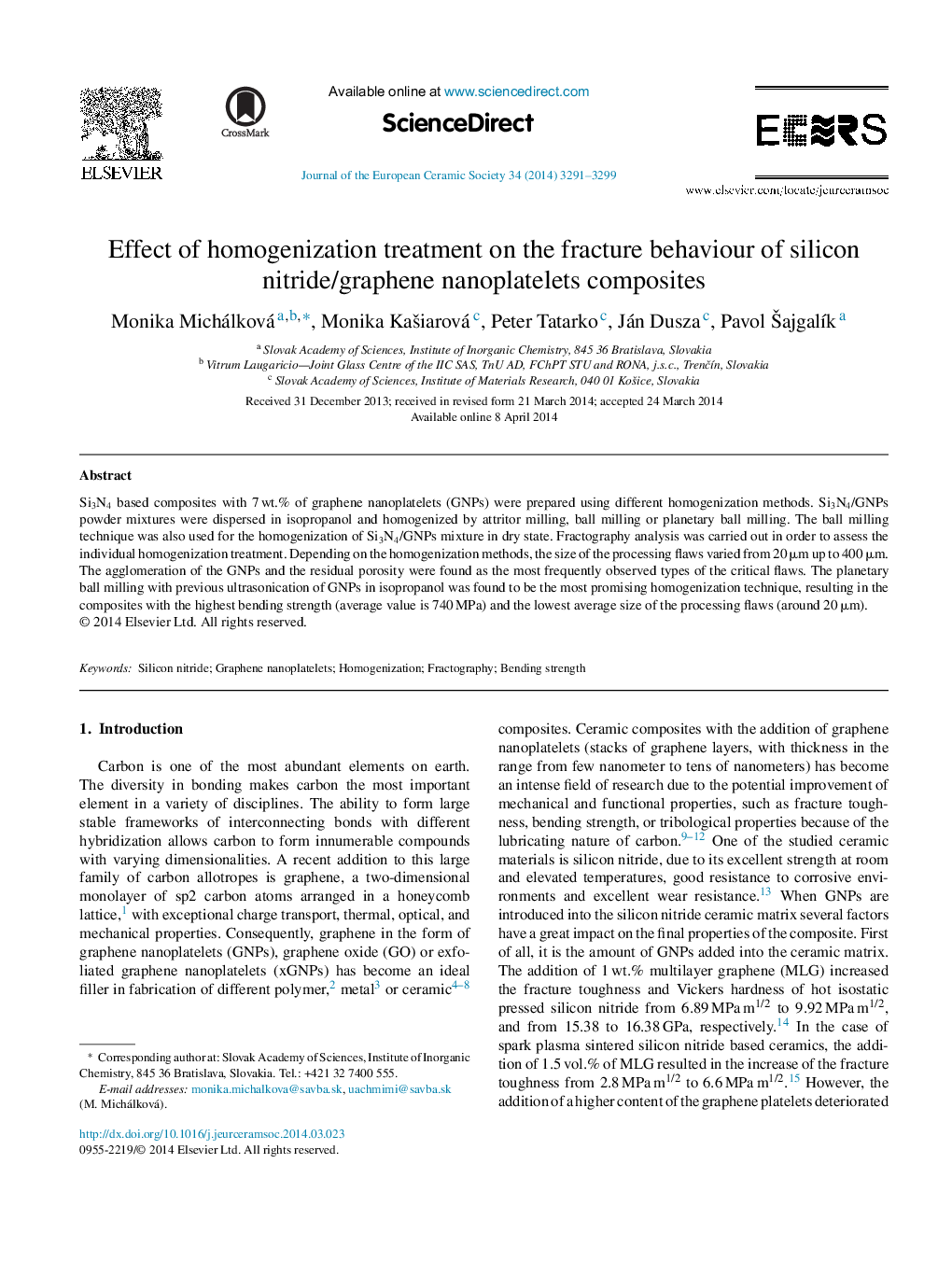| Article ID | Journal | Published Year | Pages | File Type |
|---|---|---|---|---|
| 1473675 | Journal of the European Ceramic Society | 2014 | 9 Pages |
Si3N4 based composites with 7 wt.% of graphene nanoplatelets (GNPs) were prepared using different homogenization methods. Si3N4/GNPs powder mixtures were dispersed in isopropanol and homogenized by attritor milling, ball milling or planetary ball milling. The ball milling technique was also used for the homogenization of Si3N4/GNPs mixture in dry state. Fractography analysis was carried out in order to assess the individual homogenization treatment. Depending on the homogenization methods, the size of the processing flaws varied from 20 μm up to 400 μm. The agglomeration of the GNPs and the residual porosity were found as the most frequently observed types of the critical flaws. The planetary ball milling with previous ultrasonication of GNPs in isopropanol was found to be the most promising homogenization technique, resulting in the composites with the highest bending strength (average value is 740 MPa) and the lowest average size of the processing flaws (around 20 μm).
